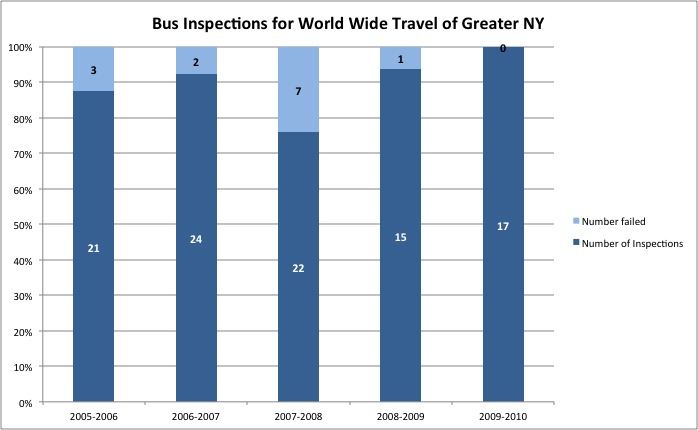By: Yiting Sun, Sana Gulzar and Mehroz Baig
On March 12, 2011, a bus carrying 32 passengers crashed on the Bronx/Westchester County Border, on I-95, killing 15 passengers and injuring 18 others. Since then, government agencies have launched an investigation into the accident.
Despite the accident in the Bronx, as well as others in New Jersey and New Hampshire, travelers are not deterred from taking these buses, and business is continuing as usual. Watch what passengers lining up for a bus from Chinatown to Atlantic City had to say:
In a March 30 update, Deborah Hersman, chairwoman of the National Transportation Safety Board, said that it is too soon to determine a cause of the accident, but that NTSB has so far determined that the driver of the bus was traveling at up to 78 miles per hour. The driver had said that another truck was involved in the accident. Another truck driver came forward saying that he had witnessed the accident. NTSB inspected his truck and found that it had not come in contact with the bus. The bus also had a camera attached to its windshield but the camera did not record the accident.
The NTSB is also holding a public forum on safety on May 10-11 to review progress since the last time the agency held such hearings, 12 years ago. This forum had been scheduled prior to the bus accident in the Bronx.
The NTSB is an independent government agency that investigates accidents to determine their cause and then makes recommendations. It does not have any power to enforce those recommendations or any responsibility in oversight of buses.
Oversight of commercial bus traffic rests with the New York State Department of Transportation and on a national level, the United States Department of Transportation. Since the bus accident, the state department of transportation held a three-day inspection of buses from March 18 – 20. The agency set up 13 checkpoints and inspected 164 buses. Within Manhattan alone, inspectors checked 26 buses and found that 16 of them, or 62 percent, had violations that were significant enough to put the buses out of service. Outside of Manhattan, another 138 buses were inspected and 25 of them, or 18 percent, had violations that put those vehicles out of service.
According to the state department of transportation’s website, this agency conducts about 154,000 inspections a year and requires all buses to be inspected at least every six months. However, 80 percent of the inspections are done on buses used for school transportation services. The other 20 percent are parceled out among other services such as charter buses, line-run commercial buses, ambulette, and airport buses.
World Wide Travel of Greater New York is the operating company of the bus involved in the crash. CNN reported that the company was involved in two crashes since 2009, and cited five times for fatigued driving from December 2009 to October 2010. The Federal Motor Carrier Safety Administration website also lists two crashes for World Wide Travel, but does not specify when they took place.
The chart below displays the number of inspections the company had each year, and the number it failed, according to the New York State Department of Transportation. During the most recent fiscal year, from April 2009 to May 2010, the company did not fail any inspections. The company could not be reached for a response.


